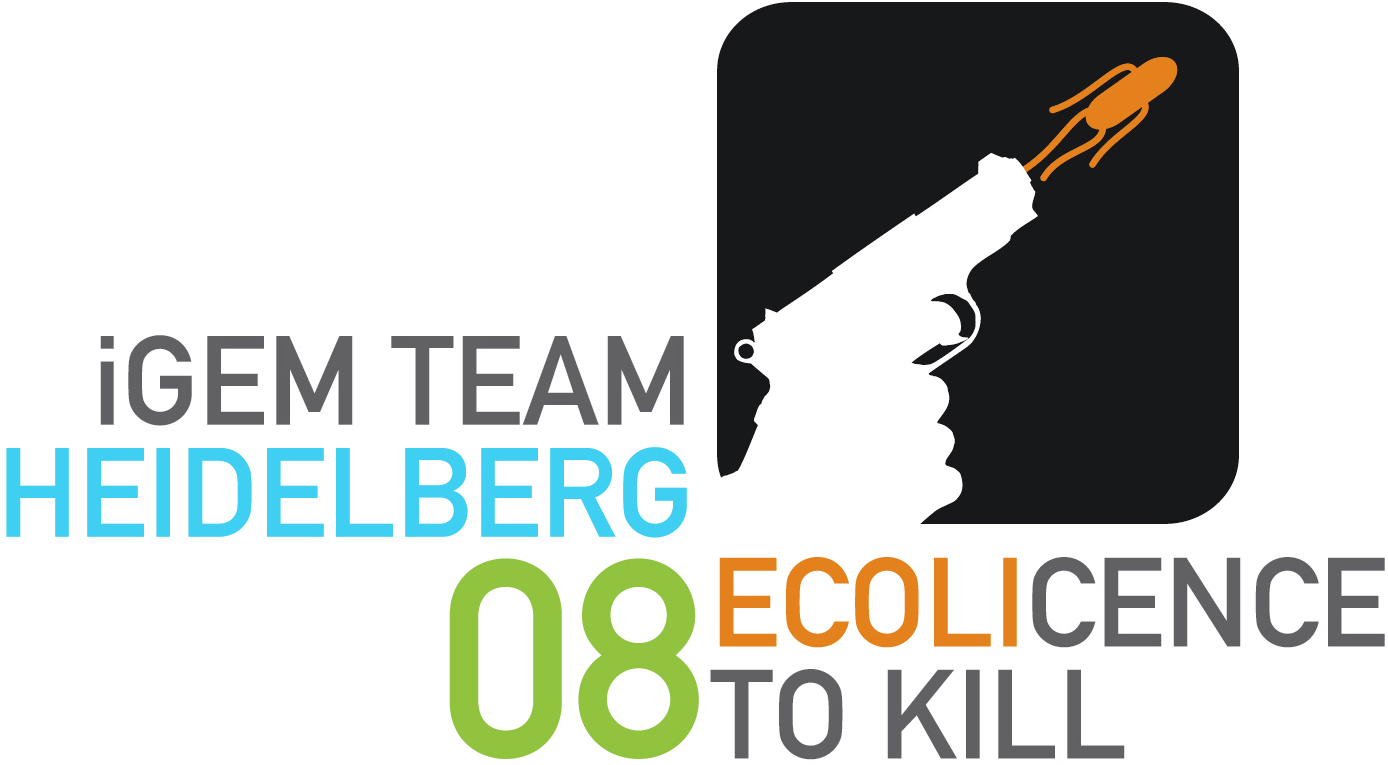Team:Heidelberg
From 2008.igem.org
| Line 3: | Line 3: | ||
{| style="color:black;background-color:black;" cellpadding="3" cellspacing="1" border="3" border-color=black width="75%" align="center" | {| style="color:black;background-color:black;" cellpadding="3" cellspacing="1" border="3" border-color=black width="75%" align="center" | ||
| - | !align="center" style="color: | + | !align="center" style="color:blue"|[[Team:Heidelberg|Home]] |
!align="center" style="color:blue"|[[Team:Heidelberg/Team|The Team]] | !align="center" style="color:blue"|[[Team:Heidelberg/Team|The Team]] | ||
!align="center" style="color:blue"|[[Team:Heidelberg/Project|The Project]] | !align="center" style="color:blue"|[[Team:Heidelberg/Project|The Project]] | ||
Revision as of 23:32, 20 August 2008
| Home | The Team | The Project | Parts Submitted to the Registry | Modeling | Notebook | Sponsors |
|---|
Project DraftEcolicence to kill: Engineering E.coli for targeting pathogenic microorganisms Pathogenic microorganisms represent a major challenge to both medicine and industry. Microbial communities known as biofilms prove to be particularly resistant to conventional therapies and demonstrate the need for alternative methods to fight bacterial growth. The formation of biofilms, as well as other processes such as virulence, antibiotic production, and sporulation, are regulated by communication circuits that depend on small signalling molecules called autoinducers. Our aim is to exploit this communication mechanism by engineering synthetic bacteria that are able to target potentially harmful autoinducer-secreting species and kill them. Working with E. coli as a model system, we plan to engineer separate “killer” and “prey” cells, and divide our project into two complementary modules. The “sensing module” comprises the modification of E. coli’s chemotaxis system to make killer cells move towards prey cells. This requires the engineering of a “sensing module” which propagates a prey-specific stimulus to the downstream signalling cascades, prompting the cells to swim towards the gradient of such a stimulus. The directed swimming stops only in the region where the stimulus is maximal, i.e. in the vicinity of the prey. The “killing module” ensures that once in the vicinity of the prey, a bacteriocidal mechanism is activated. Computer models will show how both modules behave in concert and probe the efficiency of the system in defined spatial environments. Future directions, which are beyond the scope of this project, include the modification of the sensory and killing modules, adjusting the range of targets to real pathogens, but also other organisms, specific cell types or even cancer cells. |
 "
"
